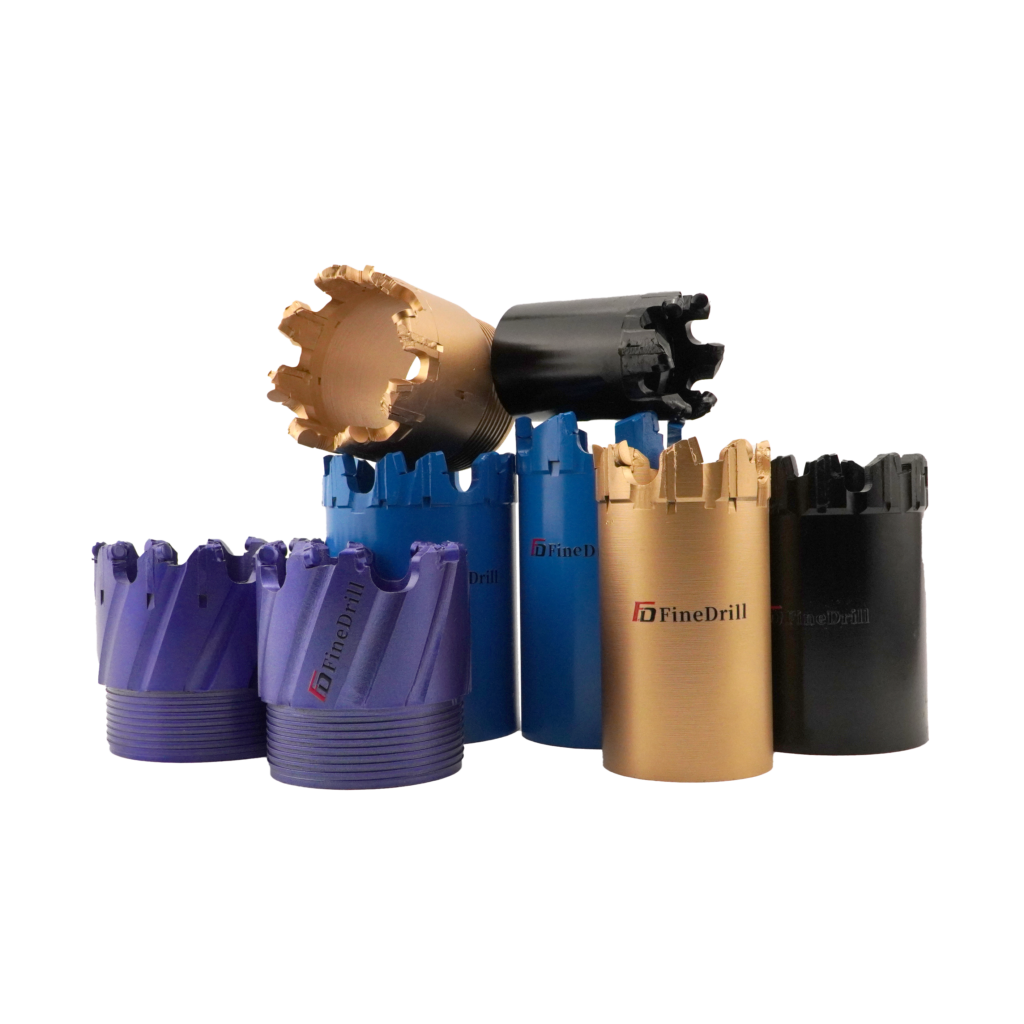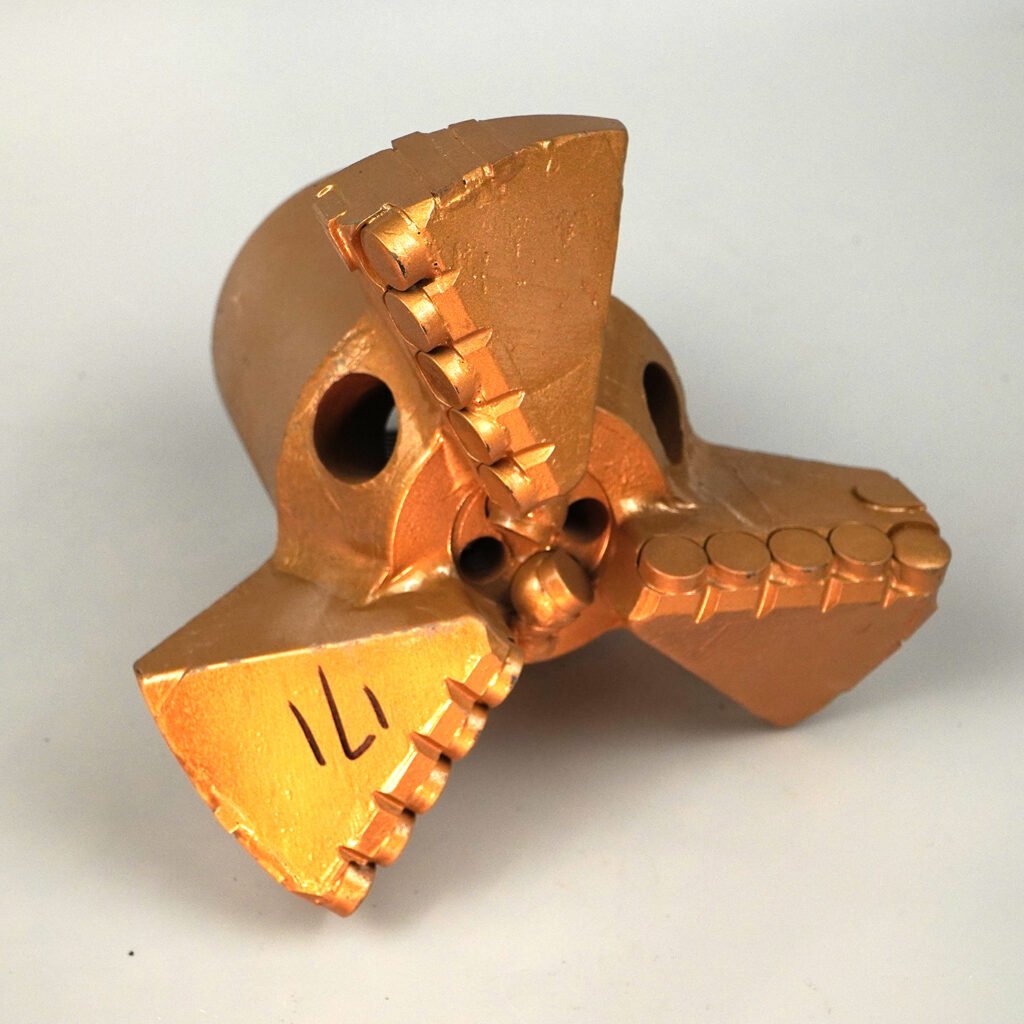CHANGSHA, China — In the world of drilling, there is no one-size-fits-all solution. When your rig encounters relatively soft, non-abrasive formations, you typically face three main choices: the classic three-wing bit, the robust roller cone bit, or the technologically advanced PDC bit. This “triple threat” competition is not about determining an absolute winner, but rather about finding the “golden key” that maximizes productivity and economic efficiency under specific geological conditions.
This article delves into how to make this critical choice when dealing with soft to medium-hard formations, such as clay layers, mudstone, shale, gypsum, and salt rock.
The Contenders: Three Distinct Players
- Three-Wing Bit: The agile sprinter. Simple in structure, it typically features three blades equipped with tungsten carbide cutting teeth. Known for its high rate of penetration (ROP) and excellent stability, it effectively prevents well deviation and is generally the lowest in cost.
- Roller Cone Bit: The all-around marathon runner. Each cone rotates independently, crushing and breaking rock through impact. It is highly adaptable, with models suitable for formations ranging from soft to extremely hard, but it usually has a slower ROP and carries the risk of bearing failure.
- PDC Bit: The efficient long-distance sports car. It uses polycrystalline diamond compact (PDC) cutters to shear rock, making it highly efficient. It offers an extremely long service life in suitable soft to medium-hard formations, but has a high upfront cost and is sensitive to formation changes and impact loads.

Head-to-Head: Performance Analysis in Soft to Medium-Hard Formations
Assuming your target formation is a homogeneous soft shale layer, here’s a comparison across key dimensions:
- Rate of Penetration (ROP):
- The Three-Wing Bit typically takes the lead. Its design allows for high rotational speeds and weight on bit in soft rock, enabling fast drilling.
- The PDC Bit follows closely. Its shearing action is highly efficient, though it may require more precise parameter control to achieve peak speed.
- The Roller Cone Bit lags behind, as its crushing mechanism limits its absolute speed in soft rock.
- Durability and Lifespan:
- The PDC Bit is the clear champion. In the absence of unexpected hard stringers or impact, one PDC bit can complete the footage of several three-wing bits in a single “run,” significantly reducing tripping time.
- The Three-Wing Bit sits in the middle. Its lifespan is limited by cutter wear and it may require multiple bits for long sections.
- The Roller Cone Bit is unpredictable. Its bearing life is finite; even in soft rock, it may fail when its time is up, unable to realize its full cutting potential.
- Hole Quality and Stability:
- The Three-Wing Bit is renowned for its smooth cutting action, producing a smooth, regular borehole wall and effectively maintaining verticality, making it an excellent choice for vertical drilling and preventing deviation.
- The PDC Bit also provides high-quality boreholes, but its stability heavily depends on the hydraulic design of its blades and fluid courses.
- The Roller Cone Bit, due to its crushing action, may result in a less uniform bottom hole pattern and generally offers moderate stability.
- Economics:
- The Three-Wing Bit has the lowest unit price and an excellent cost-per-meter for penetration speed. In known, relatively short intervals, it may offer the lowest cost per operation.
- While the PDC Bit has a high upfront cost, its extended lifespan can mean fewer trips and shorter overall operation time, potentially resulting in the lowest total cost per meter for long sections.
- The Roller Cone Bit is less economical in such formations, unless the formation contains unpredictable hard stringers requiring its greater adaptability.
The Final Verdict: How to Choose?
- Choose the Three-Wing Bit when: Your project is budget-sensitive, the formation is soft, homogeneous, and non-abrasive, the well depth is relatively shallow, and you prioritize the highest ROP and simple operation. Examples: hydrogeological surveys, environmental monitoring wells, surface drilling for shallow oil and gas wells.
- Choose the PDC Bit when: Your goal is long-section, high-value drilling, the formation is soft to medium-hard but relatively predictable, and you are willing to pay a higher upfront cost for a lower total cost per meter and the potential for a single-run operation. Examples: long lateral sections in shale gas horizontal wells, drilling through deep salt-gypsum formations.
- Choose the Roller Cone Bit when: You are facing an “unknown” or “complex” formation that might contain hard chert or conglomerate stringers. When risk avoidance takes precedence over pure speed, the roller cone bit is a reliable fallback option.
In conclusion, in the arena of soft to medium-hard formations, the three-wing bit is the cost-effective king of speed, the PDC bit is the model of longevity and efficiency, and the roller cone bit plays the role of the reliable veteran for tackling complexity. A wise choice begins with a detailed geological report and a clear list of project objectives.

